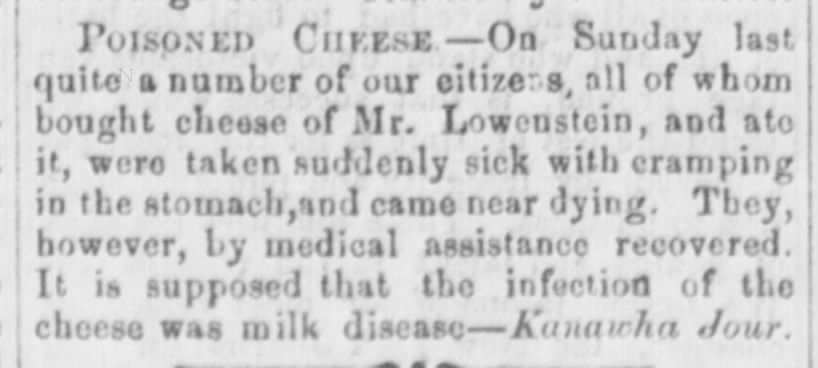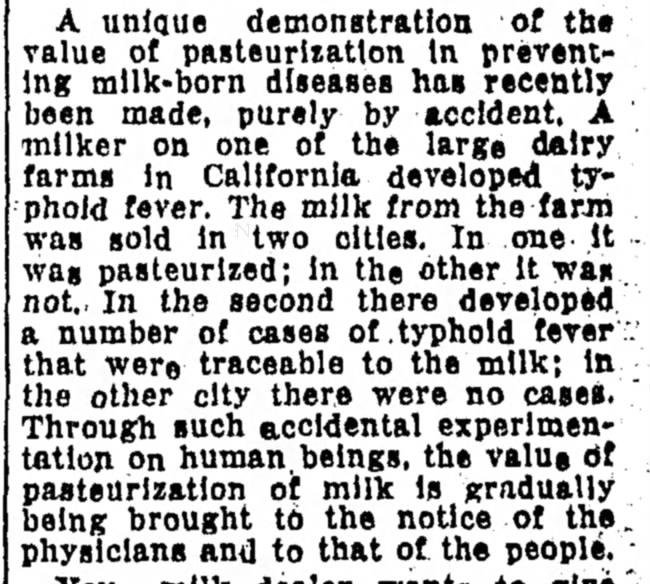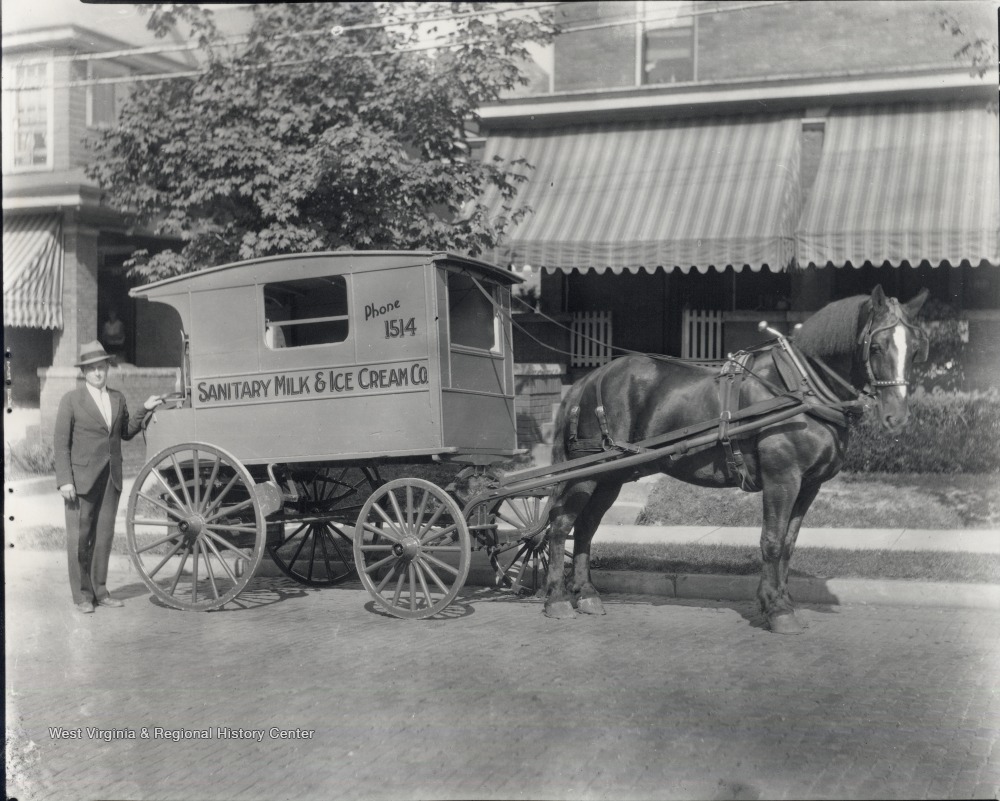In 2024, West Virginia once again allowed the sale of raw milk. Raw milk is milk that has not been pasteurized. For decades, this had been illegal in West Virginia. To physicians, scientists, and public health leaders this was unfathomable. Scientists, public health leaders, and citizens have long accepted pasteurization to be one of the most important public health breakthroughs in modern history. I was baffled when West Virginia legislators legalized raw milk sales.
There’s a saying in history: history doesn’t repeat itself, but it does rhyme. Human societies, and their histories, tend to follow patterns. When I was researching the history of milk production in this state, I found that the same debates that are playing out now played out almost a hundred years ago.

Why did we start pasteurizing milk?
We have known for some time that milk can transmit numerous diseases. Even a brief search of historical newspapers shows numerous reports of diseases linked to contaminated milk. Educational segments aimed at farmers–the most common occupation in West Virginia for hundreds of years–focused on best practice to ensure clean, disease-free milk. As one newspaper article from 1870 stated, “The association between impure milk and typhoid fever is so close that where one is the other is likely to follow.”

Milk can transmit tuberculosis, typhoid fever, dysentery, scarlet fever, and diphtheria. At one point, health officials estimated that over 90% of cases of tuberculosis in West Virginia children were related to milk consumption. To combat this, public health authorities first implemented testing of milk as well as regulations for dairy farmers. They passed regulations regarding the health of cattle, milkers (when humans still performed the job and not machines) and the farm environment. While this lowered rates of disease, it did not eradicate them and many people–particularly the young, the elderly, and those with otherwise weakened immune systems–suffered needlessly.
Pasteurization debates
Louis Pasteur had perfected the method of pasteurization in 1865. Pasteurization is not simply boiling milk, which will degrade proteins and other nutrients in the milk as it cooks it. It is the careful heating to a temperature of 145-160F, which kills germs in the milk without affecting the quality of the milk. By World War II, numerous state and local governments around the country had acted to implement and enforce milk standards, including pasteurization.
Many opposed these measures. Several farmers and dairies sued. They stated that the mandates were an infringement on their constitutional rights to produce, market, and transport their milk as they saw fit. However, courts struck down these arguments in the name of public health, as milkborne disease outbreaks continued to plague the country.

The debate reached West Virginia as well. The state encouraged the use of the United States Public Health Service Milk Ordinance but did not immediately mandate it. In several areas, a debate emerged regarding the nutritional properties of pasteurized milk. Some worried that heating milk to any degree would strip milk of its vital nutrients, and fought against this. In 1968, however, the state made the sale of raw milk to the consumer illegal. It remained this way until 2016 when restrictions were first loosened. It can now be sold directly to the consumer.

What does this mean for West Virginia going forward? The state, the country, and the world first looked to pasteurization as an important tool in public health. The serious disease spread by contaminated milk killed countless people, especially children. Pasteurizing milk does not impact the nutritional value of milk but does eliminate the growth of many serious disease-causing bacteria. Given this, it is difficult to see what benefits there are to raw milk consumption with many known risks. Only time will tell if we will have to witness the resurgence of these milkborne diseases. For now, we will continue to rhyme with the history of one hundred years ago and debate if clean, pasteurized milk is critical for public health.
The things we take for granted! Great article…as usual!